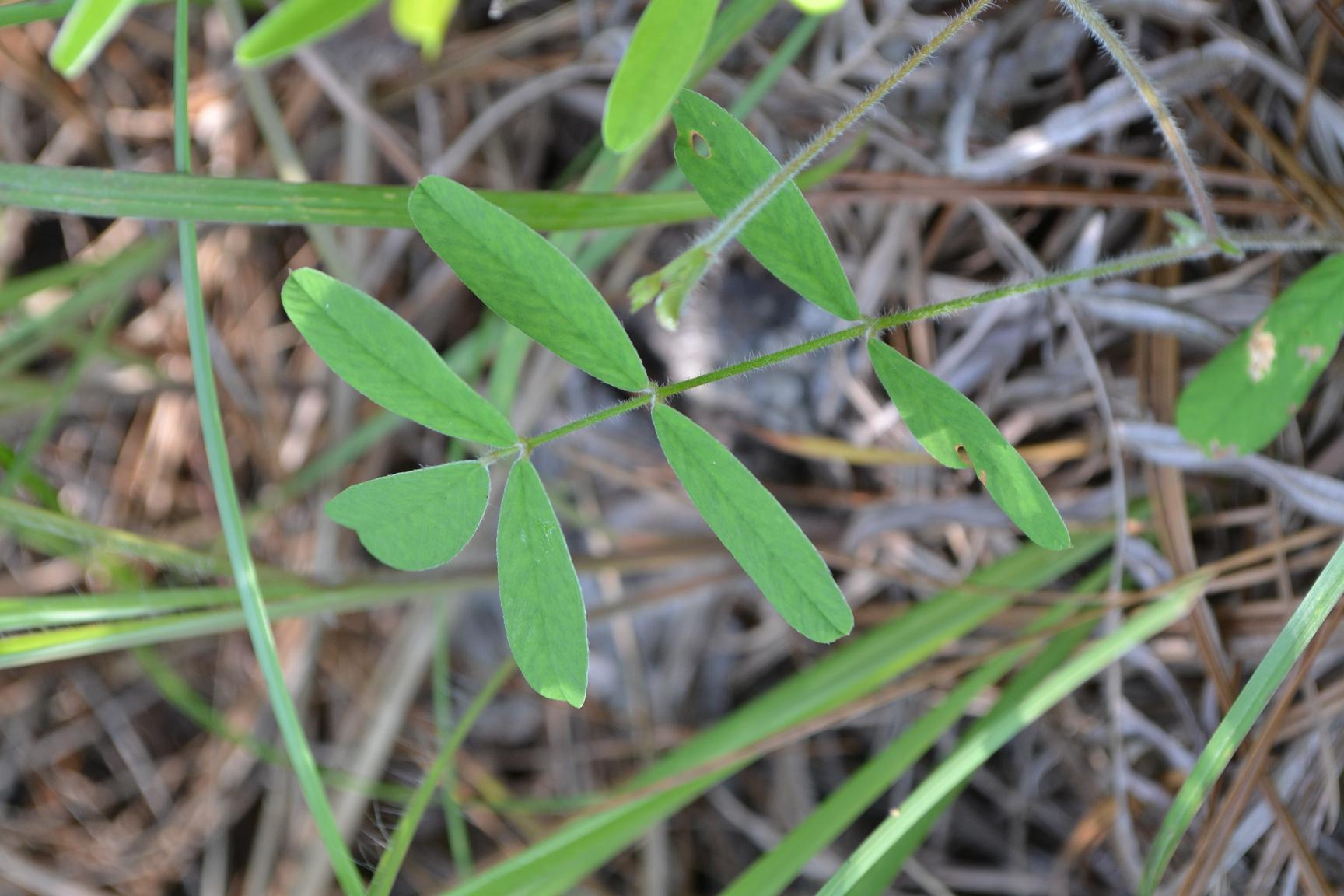Difference between revisions of "Tephrosia florida"
Krobertson (talk | contribs) |
Krobertson (talk | contribs) |
||
| Line 37: | Line 37: | ||
<!--===Use by animals===--> | <!--===Use by animals===--> | ||
<!===Diseases and parasites===--> | <!===Diseases and parasites===--> | ||
| − | + | --==Conservation and Management== | |
| + | ''T. florida'' is generally limited to herbaceous communities with limited shade and maintained with frequent fire, suggesting that it is sensitive to fire exclusion. | ||
<!--==Cultivation and restoration==--> | <!--==Cultivation and restoration==--> | ||
<!--==Photo Gallery==--> | <!--==Photo Gallery==--> | ||
==References and notes== | ==References and notes== | ||
Revision as of 18:13, 21 January 2016
| Tephrosia florida | |
|---|---|

| |
| Photo taken by Kevin Robertson | |
| Scientific classification | |
| Kingdom: | Plantae |
| Division: | Magnoliophyta – Flowering plants |
| Class: | Magnoliopsida – Dicotyledons |
| Order: | Fabales |
| Family: | Fabaceae ⁄ Leguminosae |
| Genus: | Tephrosia |
| Species: | T. florida |
| Binomial name | |
| Tephrosia florida (F.G. Dietrich) C.E. Wood | |
Error creating thumbnail: Unable to save thumbnail to destination
| |
| Natural range of Tephrosia florida from USDA NRCS Plants Database. | |
Common name: Florida hoarypea
Contents
Taxonomic notes
Ecology
Habitat
Occurs in frequently burned upland pine-grassland communities, pine-palmetto-sand live oak flatwoods, upland turkey oak-longleaf pine woods, Quercus-Serenoa scrub, and pine-oak woods[1] The communities include soil types ranging from sandy loams to sand (Ultisols, Spodosols, Entisols) (KMR). Human disturbed habitats include roadsides and fields[1].
Associated genera and species: Galactia, Stylosanthes, Pityopsis, Rhynchosia, Desmodium, Spiranthes praecox, Cassytha, Rhynchosia, Indigofera, Opuntia, dwarf oaks, T. spicata, Alysicarpus ovalifolium , Desmodium lineatum, Lespedeza repens.[1].
Phenology
T. florida flowers in May, June, and August and fruits in May, June, August, October, and November[1].
Fire ecology
It is a long-lived perennial that readily resprouts following frequent (up to annual) fires. <!===Diseases and parasites===--> --==Conservation and Management== T. florida is generally limited to herbaceous communities with limited shade and maintained with frequent fire, suggesting that it is sensitive to fire exclusion.
References and notes
- ↑ 1.0 1.1 1.2 1.3 Florida State University Robert K. Godfrey database. URL: http://herbarium.bio.fsu.edu. Last accessed: June 2014. Collectors: Harry E. Ahles, Loran C. Anderson, A.F. Clewell, Richard R. Clinebell II, M. Darst, R.K. Godfrey, J. Haesloop, R. Komarek, R. Kral, S.B. Jones, Samuel B. Jones Jr., O. Lakela, R.A. Norris, R.C. Phillips, H.R. Reed, J.D. Reynolds, A.B. Seymour, Cecil R. Slaughter, John K. Small, Jean Wooten. State and Counties:Florida: Calhoun, Collier, Columbia, Flagler, Franklin, Gadsden, Jackson, Leon, Liberty, Madison, Okaloosa, Santa Rosa, Wakulla, Washington. Georgia:Thomas. Mississippi: Lamar, Jackson, Pearl River. North Carolina: Scotland.